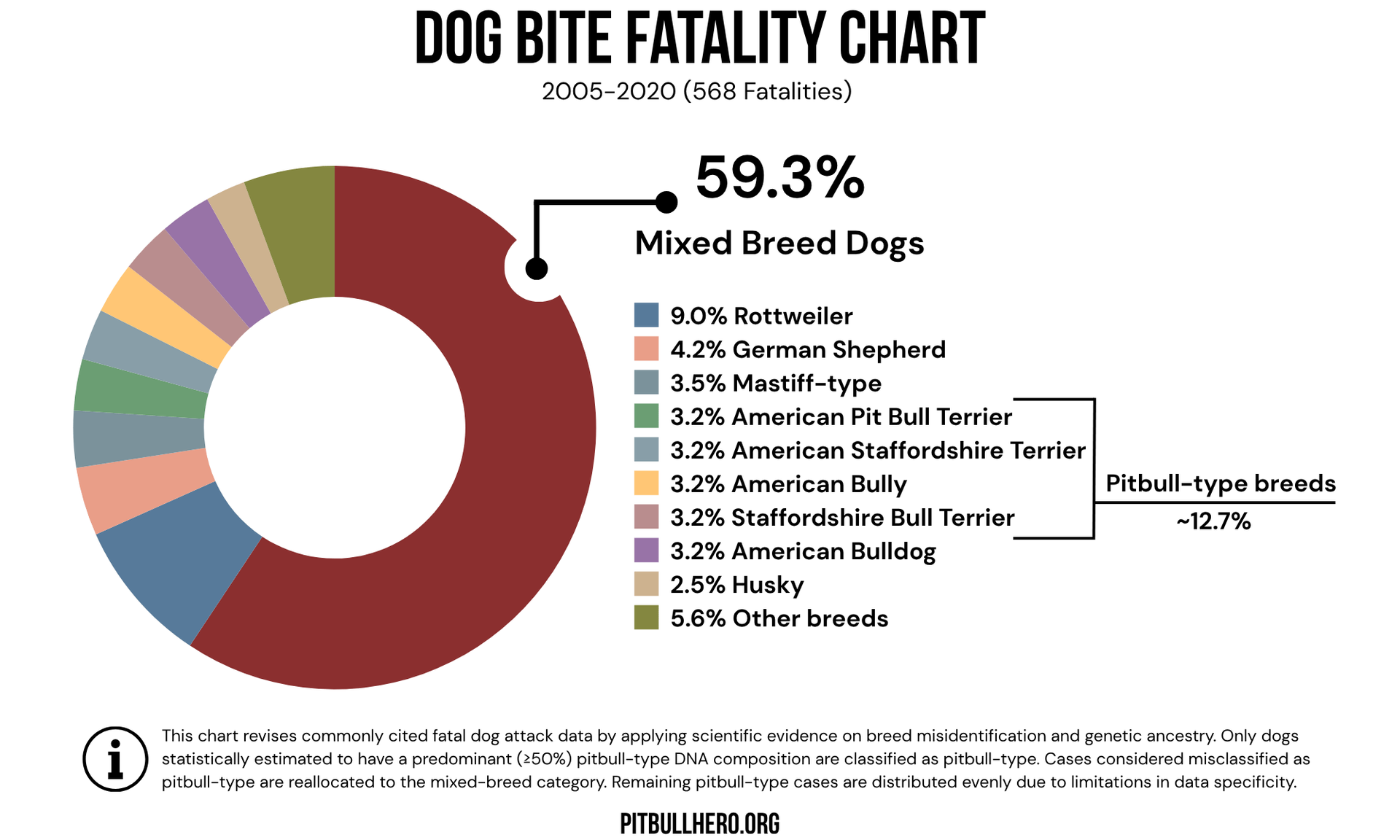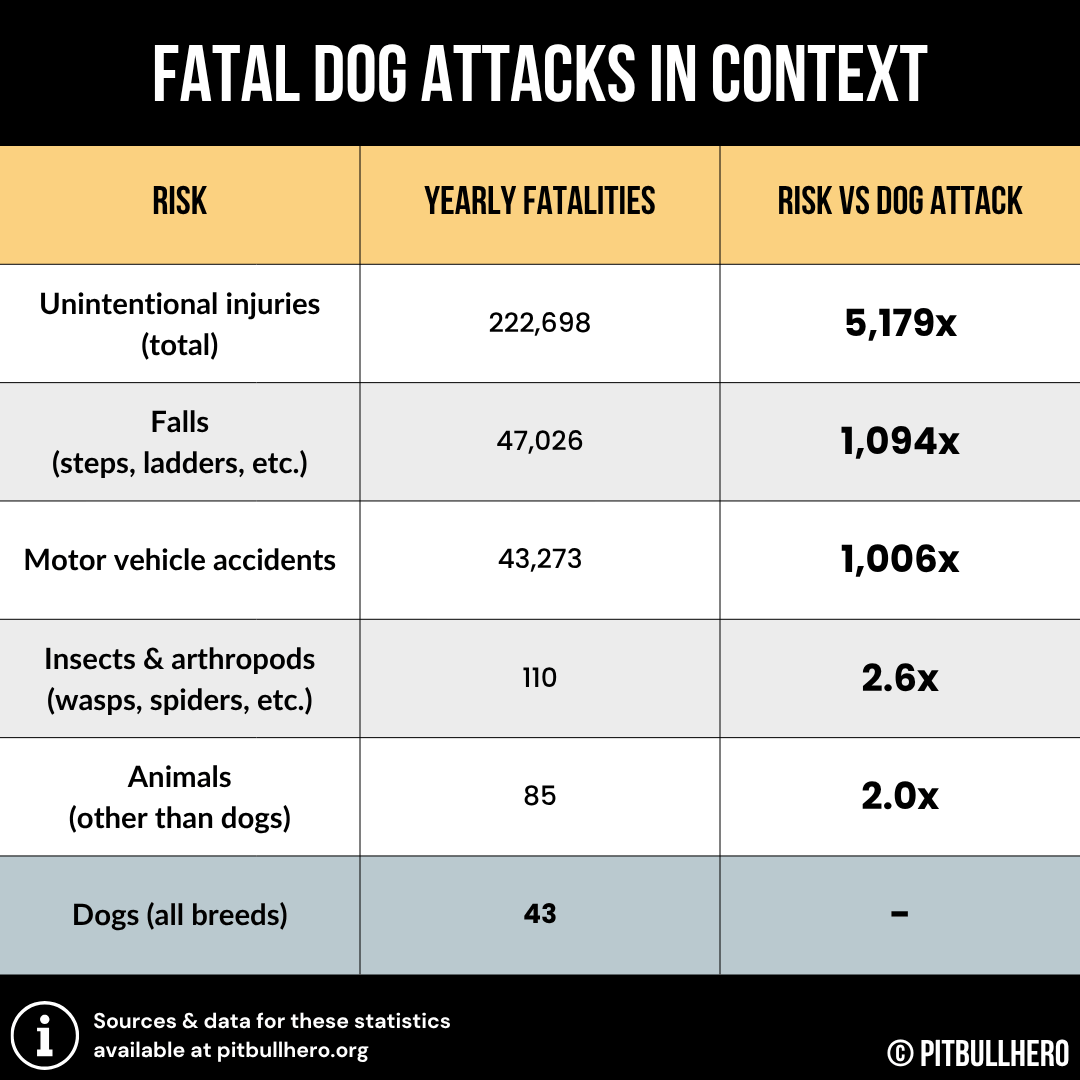Statistics
Dog Bite-Related Statistics
Statistics show that serious incidents are not breed-specific and are largely preventable. Since 2016, more than 80 different breeds and mixed breeds have been reported in fatal dog attacks, demonstrating that no single breed is uniquely responsible. The majority of these incidents involve intact dogs — a factor strongly linked to higher rates of aggression. Spaying or neutering is one of the most effective ways to reduce aggression and, by extension, prevent attacks.
In addition, scientific research consistently shows that breed does not determine a dog's aggression, bite force, or likelihood to bite. Instead, risk is shaped by factors such as environment, training, supervision, and owner behavior.
When compared to common everyday risks such as motor vehicle accidents, the overall risk of a fatal dog attack is extremely low — reinforcing the importance of responsible ownership over breed-based assumptions.

83+ Breeds
More than 80 breeds have been reported in fatal attacks in the U.S. since 2016 — confirming that serious dog bite incidents are not a breed-specific issue.
0.00001% Risk
60% Mixed Breeds
Mixed-breed dogs lead in dog bite-related fatalities, accounting for nearly 60% of fatal attacks.
84% Intact
84% of fatal dog attacks involve dogs that aren't neutered or spayed. Intact dogs are associated with higher rates of aggression.
9% Behavior
Only 9% of a dog's behavior is attributable to breed, confirming that breed has a minimal impact on behavior.
1,006x vs Cars
The risk of a fatal car accident is over 1,000 times higher than the risk of a fatal dog attack.
Dog Bite-Related Fatalities
Fatal Attacks
- More than 80 breeds and mixes have been reported in fatal dog attacks in the U.S. since 2016 — including German Shepherds, Huskies, Labradors, Rottweilers, and pitbull-type breeds.
- On average, 60% of dogs visually identified as "pitbulls" are misidentified and lack DNA from pitbull-type ancestry — resulting in unreliable breed information in media-reported dog incidents and significantly flawed data in dog bite and attack statistics.
- Mixed-breed dogs lead in fatalities, accounting for nearly 60% of fatal attacks — a key reason why breed-specific legislation (BSL) is ineffective, as serious dog bite incidents involve a wide range of breeds, not just those commonly targeted by these laws.


Data From Scientific Research
Studies
- 84% of fatal dog attacks involve intact dogs — a factor strongly linked to higher rates of aggression. Spaying or neutering is one of the most effective ways to reduce aggression and, by extension, prevent attacks.
- Only 9% of a dog's behavior is attributable to breed — confirming that breed has minimal influence. Behavior can vary widely among individual dogs, even within the same breed.
- Valid breed identification is confirmed in only 18% of media-reported dog bite incidents, undermining the reliability of breed information in most reported cases.
Fatal Dog Attacks in Context
Common Risks
- Fatal dog attacks are extremely rare — averaging about 43 deaths per year in the U.S., compared to over 47,000 from falls and more than 43,000 from motor vehicle accidents.
- Dogs pose one of the lowest safety risks to people, despite rare but unfortunate serious bite-related incidents.
- The risk of being fatally attacked by a dog is approximately 0.00001% — based on an average of 43 fatal attacks per year and a U.S. population of 340 million — significantly lower than many other everyday risks.
Sources:
- CDC FastStats - Unintentional injuries, motor vehicle accidents, & falls (2023)
- CDC WONDER - Insects & arthropods (2018-2023 average/year)
- CDC WONDER - Animals other than dogs (2018-2023 average/year)
- CDC MMWR/WONDER - Dogs (2011-2021 average/year)


